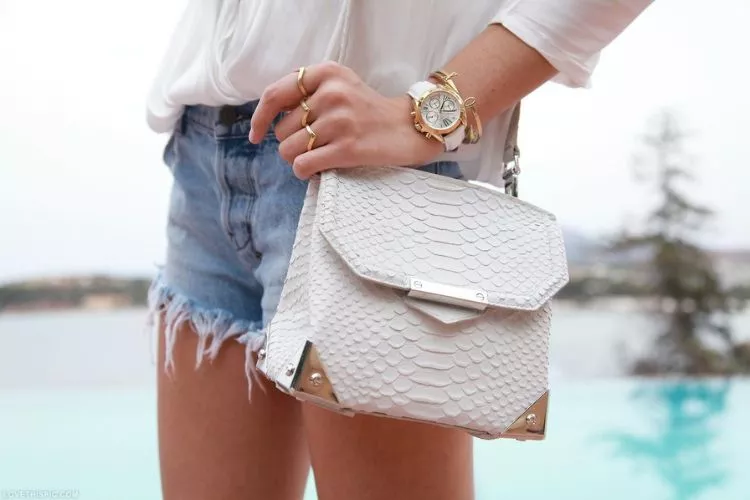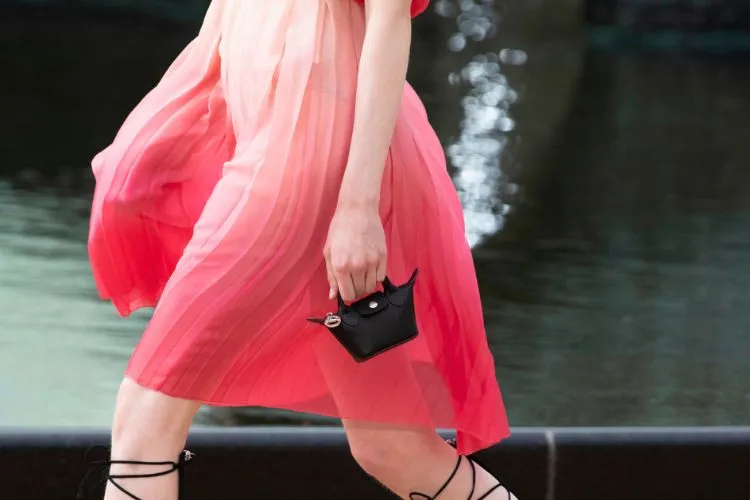Wherever you go, from bustling metropolitan cities to tranquil rural areas, one accessory remains a constant among women: the iconic purse. 👜
But have you ever stopped to wonder, why do women carry purses? What makes this accessory such a staple in every woman’s life? Is it simply for practicality, or does it have a deeper cultural and historical significance?
In this article, we dive into the fascinating reasons behind why women carry purses. We’ll explore not only the practical functions of a purse but also its role in fashion, culture, and societal norms.
From its historical roots to modern-day necessity, the purse is more than just a bag for essentials — it’s an emblem of personal expression, freedom, and style.
So, let’s unpack the mystery of this iconic accessory and discover why the purse remains a symbol of identity for women around the world.
Wherever you go, from crowded metropolitan cities to remote rural areas, you’ll notice one common accessory among women, the ubiquitous purse.
But have you ever wondered why do women carry purses? Why is it such a staple of a woman’s existence? Is it purely for practical purposes, or is there a deeper historical significance?
This article tries to explore the mystery behind why women carry purses. We will delve into function, fashion, and cultural nuances contributing to this trend.

Societal norms and personal choice also play crucial roles in understanding this phenomenon. Brace yourself as we unpack this emblematic fashion accessory that’s more than just a bag to carry essentials.
Why Do Women Carry Purses?
The answer to why women carry purses lies in the combination of practicality, societal expectations, and personal style.
Firstly, the practicality perspective suggests that women typically do not have as many pockets in their clothing as men do. Therefore, a purse helps to carry all the necessary items, such as wallets, keys, and phones.
Purses are also often equipped to carry makeup items, tissues, a book to read, or even a miniature first aid kit.
Secondly, societal expectations have dictated certain fashion norms. The purse is considered an essential accessory for a well-groomed woman.
The silhouette, color, brand, and condition of the purse also often serve as a status symbol, expressing the carriers’ personality and economic standing.
Lastly, personal style is imperative. Women like to use purses to complement their outfits and express their individuality.
In recent years, with the increasing variety of purse styles available in the market, from clutches to cross-bodies, a purse can be a fashion statement.
Overall, women carry purses because they are useful, culturally expected, and a way to express personal style.
Why Do Women Carry Purses But Not Men?
The primary reason women carry purses but not men is due to differences in clothing design and functionality.
Women’s clothing often lacks pockets or has limited storage capacity, whereas men’s clothing typically provides spacious pockets for their essentials.
As a result, women rely on purses for carrying their belongings, while men can store items in their pockets.
Additionally, societal norms and fashion trends have long established purses as a feminine accessory, further solidifying the gender-based distinction.
At what age do girls start carrying purses?
Some girls may start using purses as early as their preteen years, around 11-13, often to carry essentials like feminine products.
Often, the decision about when to start carrying a purse is up to the child and their parents, and it may depend on when the girl starts to carry her things, such as school supplies and money.
It is also worth noting that purses often become more commonplace in high school, where teenagers start to adopt the trend.

As for the norms and trends in purse usage among teens, a survey from an investment firm, Piper Jaffray, found that teenage girls nowadays spend an average of $90 per year on handbags.
These findings suggest that the age at which girls start carrying purses varies among individuals, reflecting personal needs, maturity, and socio-cultural contexts.
How many purses does the average girl have?
The number of purses varies among individuals. However, according to a survey conducted by The Krazy Coupon Lady, the average American woman owns nine handbags. Another survey suggests that American women own about 11 handbags on average.
It is important to note that these statistics represent adult women, and the number of purses owned by girls and teenagers may differ. It can fluctuate due to personal preferences and needs.
Are purses only for women?
No, purses are not only for women. Unisex purses in the market are designed to be suitable for both men and women.
These unisex bags cater to the evolving fashion trends and the demand for gender-neutral accessories, blurring the lines between traditionally gendered products.
Functionality and style play a vital role in the rise of these genderless handbags. So, while purses have been traditionally associated with women, the availability and growing popularity of unisex options make it clear that they are not exclusive to women.
Never date a girl who carries a tiny purse, meaning
The advice “Never date a girl who carries a tiny purse” may have different interpretations based on subjective perspectives.
Some people interpret this saying as a playful commentary on personality traits – hypothesizing that a woman who carries a small purse is likely to be low maintenance or prefers simplicity, carrying only essentials.
Others might suggest that a small purse indicates a certain level of self-sufficient minimalism and independence.

This phrase could also imply that a woman with a small purse is less likely to be prepared for a wide range of unexpected circumstances due to limited storage capacity.
So, it might suggest some level of risk-taking or unpredictability.
However, it’s important to note that such generalized assumptions can be misleading. The size and type of purse a woman carries often have more to do with personal style, comfort, and practicality than defining a person’s suitability as a dating partner.
Ultimately, views on this topic will significantly depend on individual perspectives and values.
The Historical Significance of Purses
The use of purses dates back centuries and holds a deep historical significance. Historically, small bags were practical tools for both men and women to carry coins and other personal items before the invention of pockets in clothing.
These early pouches were often tied to belts or worn as accessories, reflecting the practicality and style of their time.
By the 18th and 19th centuries, societal norms began to shift. As men’s fashion evolved to include functional pockets sewn into clothing, women’s clothing prioritized aesthetics over practicality, often omitting pockets entirely. This change solidified the purse as a necessary accessory for women.
During this period, purses also started symbolizing social class and status. Wealthier women carried elaborate, decorative purses crafted from fine materials, while working-class women used simpler designs for practicality.
In the 20th century, the industrial revolution and changing gender roles significantly influenced the evolution of purses. The increasing availability of mass-produced bags introduced new styles and functionality.
Meanwhile, as women began entering the workforce and engaging in public life, purses adapted to their growing needs, becoming larger and more functional to carry essential items.
Modern Symbolism and Versatility
In today’s fashion landscape, purses are no longer just practical items; they are also cultural symbols and expressions of individuality. Many high-end designer bags are seen as investments or status symbols, appreciated for their craftsmanship and exclusivity.
Additionally, the purse has become a versatile accessory. From tiny clutches for formal events to spacious tote bags for daily errands, purses cater to a wide variety of needs and occasions.
This versatility ensures their continued relevance, appealing to women (and increasingly men) across different demographics and lifestyles.
Conclusion :
The question of why women carry purses unravels a tale deeply rooted in functional necessity, clothing design consideration, and social norms.
Purses are practical tools for women to transport personal items, largely because women’s clothing traditionally lacks the storage capacity found in men’s attire.
Additionally, societal and fashion trends reinforce the popularity of purses among women. However, the diversity of purse sizes and styles and their increasing gender-neutral appeal underscores the evolution in this domain.
While purses are often associated with women, the modern world observes an evolving trend of unisex purses that transcends traditional gender conventions.
Ultimately, the choice to carry a purse, its type and size, lies solely in the hands of the individual, shaped by their personal preference, comfort, and lifestyle needs.
